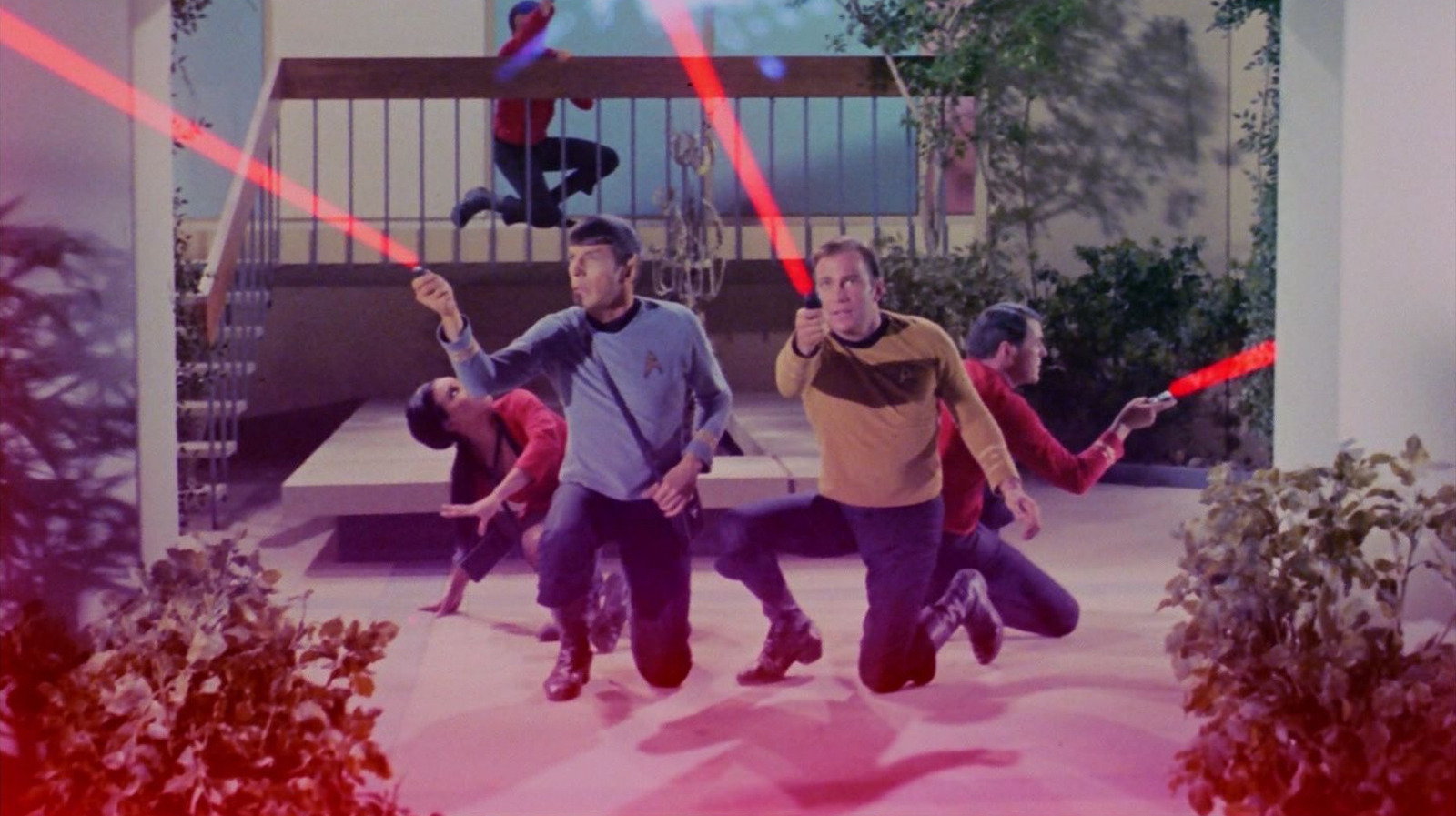
We may receive a commission on purchases made from links.
On “Star Trek,” when Starfleet officers were about to embark on a dangerous away mission, they would be instructed to set the gauges on their hand-held phasers. Most often, the phasers would be set to “stun,” although more perilous missions would require them to set their phasers to “kill.” I would advise not mixing of those settings. Of note: there is no “bone” setting. Later, on “Star Trek: The Next Generation,” officers would also talk about a “heavy stun” setting. The “Next Generation” phasers would later be revealed to have 16 distinct settings, with the lowest able to knock a humanoid unconscious for about five minutes, and the highest setting — according to Rick Sternbach’s and Michael Okuda’s invaluable “Star Trek: The Next Generation Technical Manual” — able to disintegrate approximately 650 cubic meters of rock per shot.
Advertisement
In the mythology of the franchise, the weapons are called “phasers” because they employed phase modulators to control the blast yield of a particle beam. Phase modulators are a real-world technology that was spruced up to sound more fantastical for “Star Trek.”
As it so happens, there was also a practical reason for naming the commonest “Star Trek” weapons “phasers.” After all, series creator Gene Roddenberry could have easily relied on a reliable sci-fi trope, “laser guns,” as his weapons. Lasers had become well-known to sci-fi fans and to the scientific community in general, so if Roddenberry had said that Starfleet crew members carried lasers, no audience member would be lost. As it turns out, Roddenberry had indeed initially intended to call Starfleet weapons “lasers,” a fact mentioned in a 2016 “Star Trek” retrospective printed in Time Magazine. Roddenberry changed the fictional tech to “phasers” when he learned that real-world laster technology was more advanced than he had assumed.
Advertisement
Lasers were too 20th century
It’s worth pausing to note that “Star Trek” has often striven to present its fantasy technologies as plausible (or plausible-sounding), and invent sci-fi widgets that were somewhat grounded in real-world science. There are no engines that can “warp” space and allow a craft to travel faster than the speed of light, after all, but “Star Trek” at least acknowledged that some sort of means would be required to “skip around” the ordinary laws of physics. These concepts would fall into sharper relief with “Star Trek: The Next Generation” in 1987.
Advertisement
Roddenberry had written the original “Star Trek” pilot episode to include lasers as Starfleet’s main weapon. While developing the series in the mid-1960s, though, he began to learn of the current state of laser technology, and found that hand-held laser guns might only be a few years away from practical use. Seeing as “Star Trek” took place in the 22nd century, he had to update its technology to match. He decided to change the name of “lasers” to “phasers,” to make them sound more fantastical. Roddenberry was quoted as saying “We didn’t want people saying to us three years from now, ʻOh, come on now, lasers can’t do that.'”
It would be like watching the 1995 movie “Hackers” in 2025. Modern audiences likely have a hearty chuckle over how impressed the “Hackers” characters are with the ultra-primitive ’90s computer tech on display. Gene Roddenberry didn’t want his science fiction show to look dated, so he invented a fantasy technology — phasers — on the spot. The “Star Trek” technical advisors then, as the show progressed, began to assign technical meaning to the word. By the time ancillary “Star Trek” technical manuals were published, phasers made perfect sense.
Advertisement



